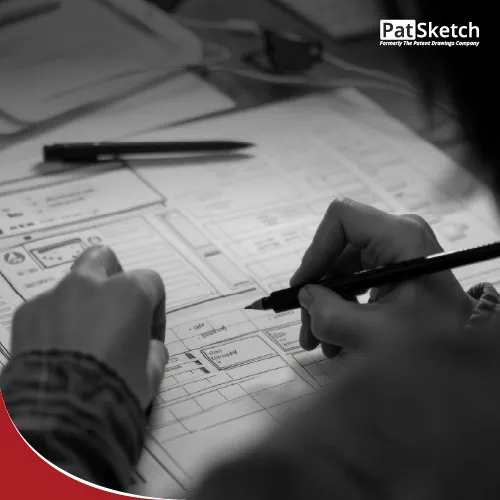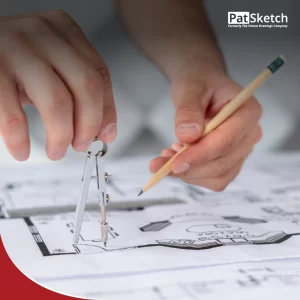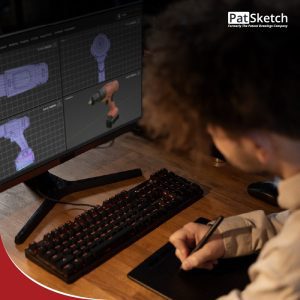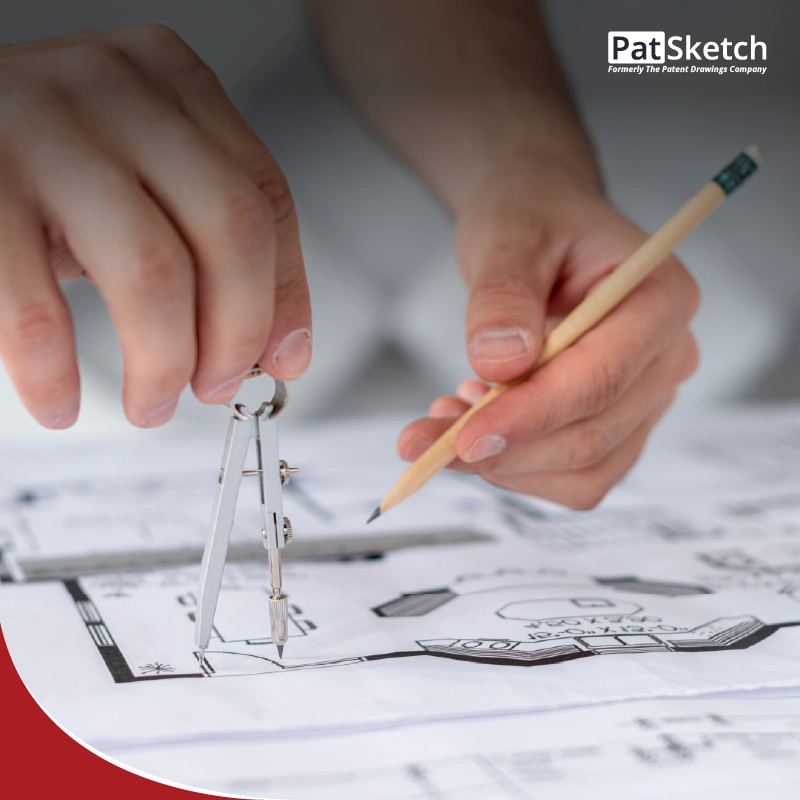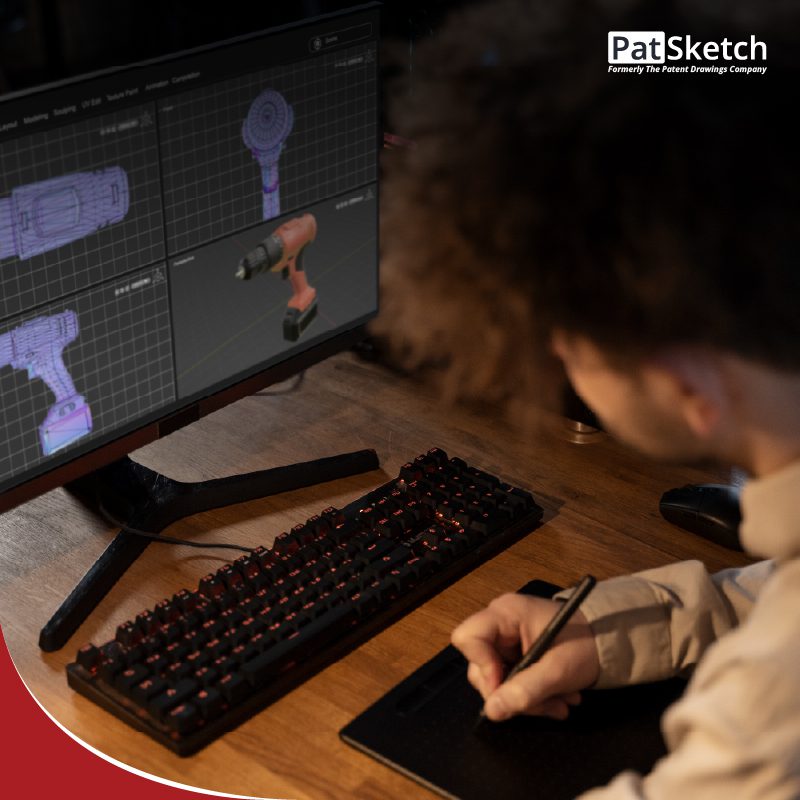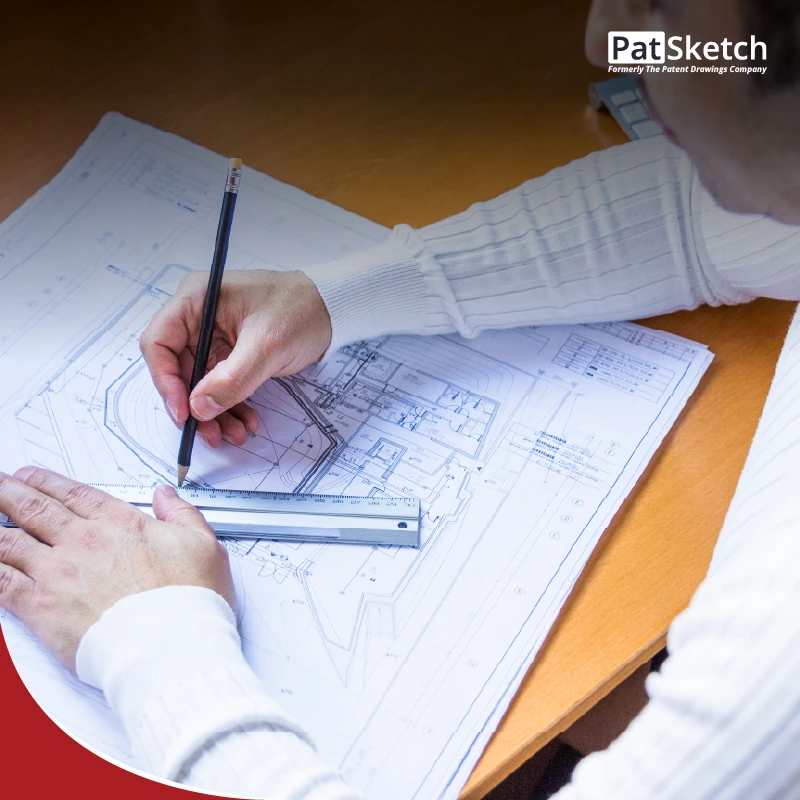A complete patent application is made up of three key parts, the draft description, patent drawings, and abstract, each serving a distinct purpose. The description details every aspect of the invention, drawings visually illustrate it, and the abstract summarizes its technical features. With recent USPTO and WIPO updates, including the mandatory DOCX filing requirement and new 2025 procedural changes, accuracy and compliance are more critical than ever. Preparing each section clearly and to current standards strengthens your application and helps avoid costly delays or surcharges.
Also Read: Customer Success Stories on Patent Drawings
What is a Draft Description?
The draft description is the most critical part of a patent application that entails a description of the invention. It states how the inventor made the invention and how he can use it. The description should be sufficient to enable any skilled person in the same field to practice the invention. However, a detailed description alone cannot make the patent application absolute. That is why applicants have the option of including illustrations to aid the examiner’s understanding of the invention.
The draft description offers information on the function of every part based on the reference numbers highlighted in patent drawings. Thus, this must include every detail of the invention along with the best way to perform the invention.
Also Read: 4 Key Software to Make Your Patent Drawings More Creative
How to Draft the Description?
A coherent and meticulous description of the invention is key to a successful patent grant. This section must include a brief explanation of the invention with the help of drawings. However, applicants should avoid the use of terms that may limit the scope of the invention.
Similarly, this section should disclose details of the invention along with the best mode to use it. It does not matter whether the invention is a product or a process. The physical structure or the method of conducting the invention should be detailed. Other factors to keep in mind while drafting descriptions are as follows.
- The nature of improvements/modifications one makes in prior art should be clear. Moreover, it must also remain detailed in the case of the ‘patent of addition’ application. It is an application one makes for a patent concerning a modification of the invention disclosed in the main application (for which the patentee has already applied for or has obtained a patent).
- References to drawings should be specific and mentioned in an acceptable format.
- This section should support all the details that one needs protection for in the patent application.
Also Read: How to Overcome Patent Drawing Rejection Based on Hatch Patterns
Patent Drawings Requirements and Conditions
The draft description section is followed by patent drawings. Patent drawings are extremely helpful in illustrating the invention and expanding its disclosure. For instance, one can explain every invention in the engineering field with the help of diagrams. So, multiple drawings with detailed descriptions can make an application more effective and descriptive. Thus, one must draft these drawings following the guidelines of the patent office concerned. The points below highlight a few important factors to keep in mind while drafting drawings, and the two figures below visually represent these norms.
- Invention Details: Patent drawings should determine a device, a system, and methods of carrying out an invention.
- Sheet Type and Margin: One must ensure preparing drawings are prepared on an A4 or letter-size sheet (according to filing requirements) using black indelible ink on thick and durable paper. It should have a margin of 25 mm at the top and left side, 15 mm at the right side, and 10 mm at the bottom.
- Drawing Rules: Drawings shall be on a scale large enough to depict the inventions clearly and must not include any marked dimensions. Most importantly, no descriptive matter should appear in illustrations.
- Applicant’s Name and Sheets: the name of the applicant should be present in the margin area, – the middle of the sheet. You can view the same in the two figures below. The total number of sheets and the consequential sheet number should be present in the middle of the sheet, below the margin line.

Fig. 1: Guide to Patent Drawings: Margin
Also Read: Patent Drawings: How to Differentiate Between Industrial Designs and Patents
2024 – 2025 USPTO & WIPO Regulatory Updates
Recent developments have updated patent filing processes in the U.S. and the rest of the world. If you are filing in 2024 or after, the following updates are essential:
DOCX Filing Requirement (Effective January 17, 2024)
- The USPTO requires specifications, claims, and abstracts to be filed in DOCX format.
- Non-DOCX filings have a $400 surcharge (discounted for small/micro entities).
Patent Center Modernization (2025)
- The USPTO’s Patent Center now accommodates single DOCX submissions for specifications, claims, abstracts, and drawings in a single streamlined process.
- Improved security features were implemented on May 13, 2025, to protect applicant information.
Consolidated Patent Rules – 2025 Changes
- Implementation of WIPO ST.26 for sequence listings (particularly applicable in the area of biotech patents).
- New electronic signature provisions.
- Fee changes in several categories of filings.
- Cancellation of accelerated examination for utility applications (effective July 2025).
- Speeded up issuance dates for patents already approved in some instances.
Abstract: Drafting it, the Right Way!
The patent drawing section is followed by an abstract that provides technical details of the invention. It refers to the technical field of the invention along with the existing problems and their solutions. The abstract aims to assist the official classification of the application based on prior art and provide a concise text that helps third parties during a patent search. Therefore, it’s important to draft it with utmost care. The abstract contains a summary of the invention, which mentions the draft description and claims showcased by the patent drawings.
To be effective, the abstract should be consistent with the broadest claim and include technical information on the invention, its usefulness, and related complications. You must ensure drafting it on a fresh page and conclude it within 150 words. Moreover, you must draft it based on the notified rules specified by the patent and trademark office concerned. For example, the patent applications in the US follow the patent drawing guidelines listed by the United States Patent and Trademark Office. Generally, the abstract is the first part of a patent application that falls to the examiner’s attention. Therefore, all details of the invention should be accurate and clear.
Also Read: How to Respond to an Office Action Received on Design Patent Drawings
PatSketch
PatSketch offers end-to-end support for your patent application by delivering precise patent drawing services that seamlessly align with your draft descriptions and abstracts. Our team ensures every visual is USPTO/EPO-compliant and fully supports your written disclosure. Whether you need detailed utility patent drawings services or polished design patent drawing services, PatSketch helps you present your invention completely and professionally, improving the strength and clarity of your application.

